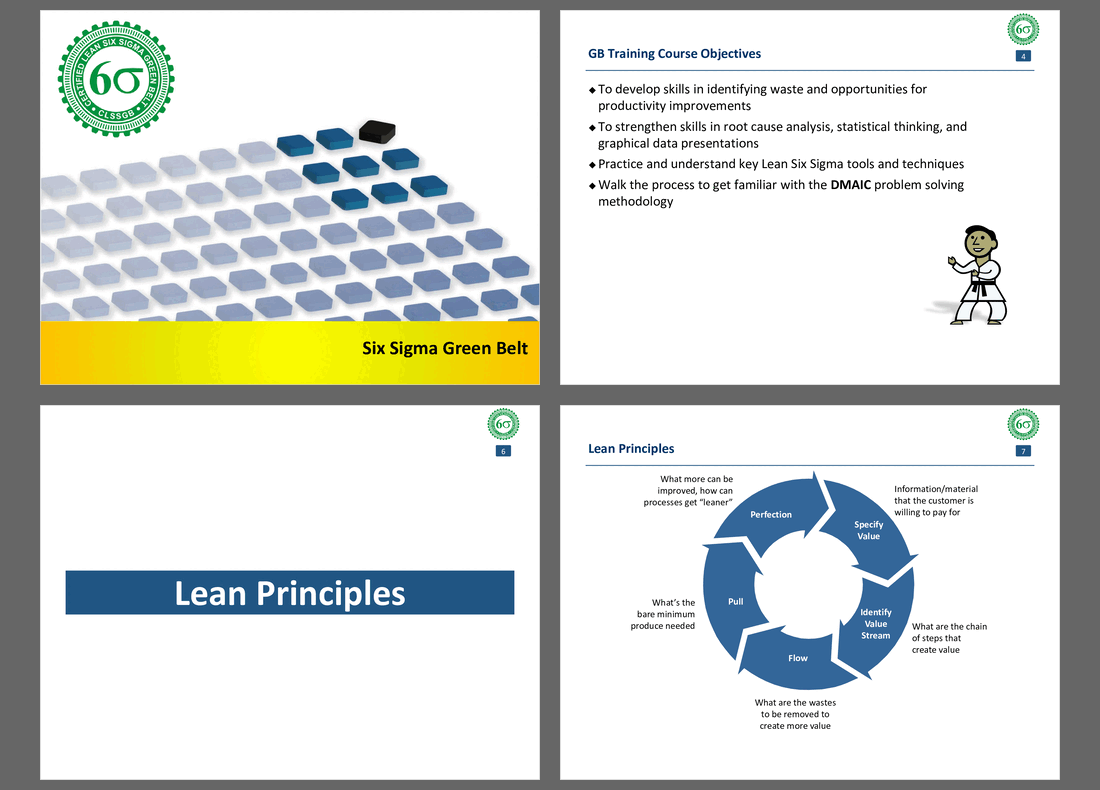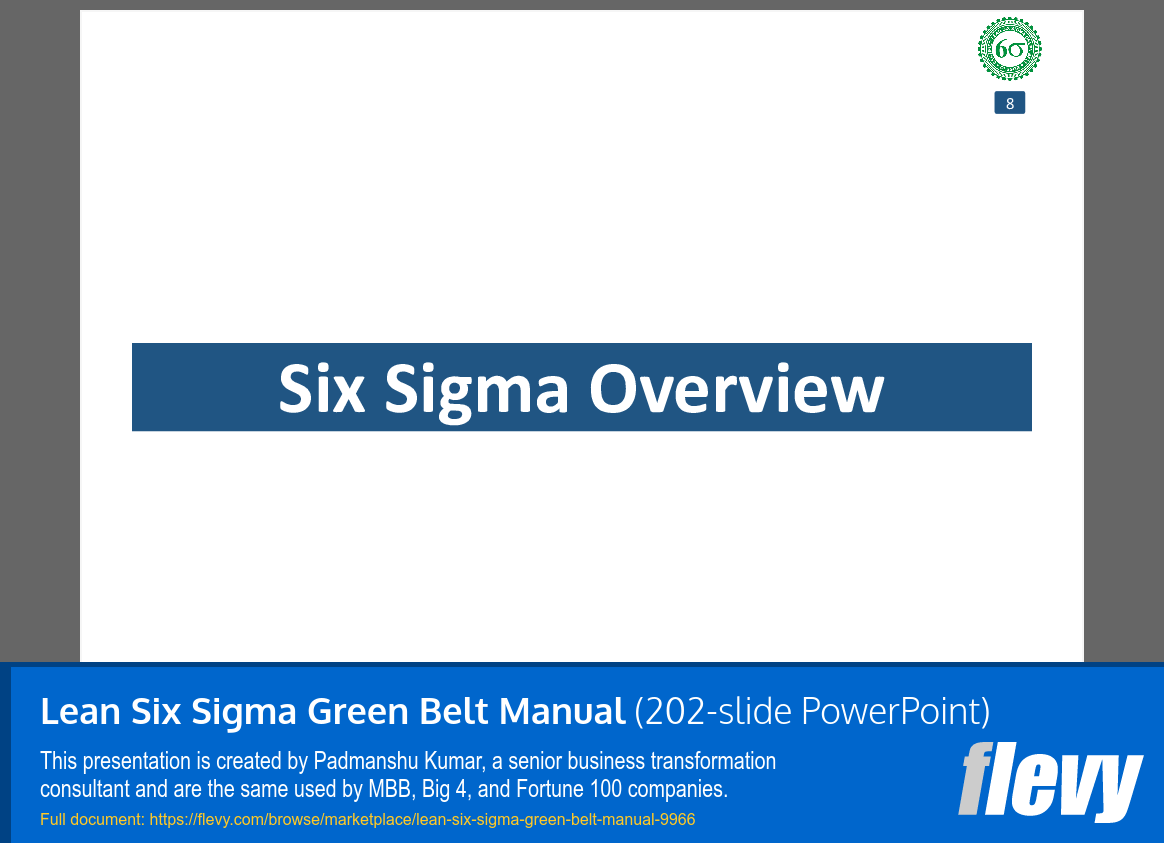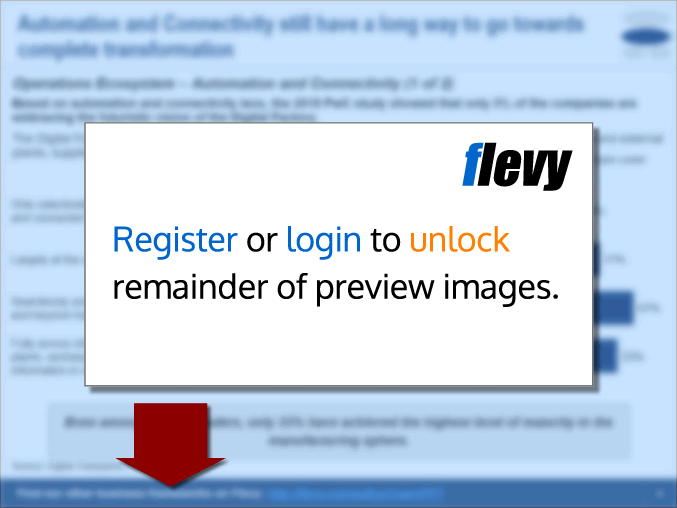Lean Six Sigma Green Belt Manual (PowerPoint PPTX Slide Deck)
PowerPoint (PPTX) 202 Slides
BENEFITS OF THIS POWERPOINT DOCUMENT
- Provide a Lean Six Sigma Framework for Process Excellence and Process Improvements
- Apply Lean Six Sigma Methologies on Real Time Basis in business
- Use This Manual to Train your People on Lean Six Sigma
LEAN SIX SIGMA GREEN BELT PPT DESCRIPTION
Lean Six Sigma (LSS) is a hybrid business methodology that integrates Lean principles and Six Sigma tools to improve process efficiency, reduce waste, and minimize defects and variations, ultimately leading to increased customer satisfaction and better financial performance.
Lean focuses on identifying and eliminating non-value-adding activities to improve flow, while Six Sigma uses data-driven, statistical analysis (like the DMAIC process) to reduce process errors and achieve near-perfect, consistent quality
Lean Principles:
1. Focus: Eliminating waste and streamlining processes.
2. Methodology: Identifying and removing non-value-adding steps to improve flow and efficiency.
3. Goal: To "do more with less" by optimizing processes and reducing cycle times.
4. Waste Categories: Includes defects, overproduction, waiting, non-utilized talent, transportation, inventory, motion, and extra-processing (DOWNTIME).
Six Sigma Principles:
1. Focus: Reducing process variation and defects to achieve near-perfect quality.
2. Methodology: Employing a structured, data-driven approach using statistical methods.
3. Goal: To achieve the highest level of quality, with a Six Sigma process having only 3.4 defects per million opportunities.
4. Process: Often utilizes the Define, Measure, Analyze, Improve, and Control (DMAIC) framework to solve problems and improve existing processes.
How Lean and Six Sigma Work Together:
1. Comprehensive Framework: LSS combines Lean's focus on speed and efficiency with Six Sigma's rigorous approach to quality and variation.
2. Complementary Goals: Lean removes unnecessary elements from a process, while Six Sigma makes the remaining steps more robust and consistent.
3. Benefits: This combination leads to more efficient operations, reduced costs, and higher customer satisfaction by improving processes and delivering greater value.
Deliverables of this document:
1. Understand lean and six sigma
2. Learn basic statistics
3. Learn lean methologies
4. Learn DMAIC
5. Learn six sigma tools
6. Learn quality tools
7. Understand process charateristics
8. Learn 8 lean wastes
9. Learn 5 Whys
10. Learn fishbone analysis
11. Learn data analysis
12. Learn cost benefit analysis
13. Understand how lean and six sigma work together
Got a question about the product? Email us at support@flevy.com or ask the author directly by using the "Ask the Author a Question" form. If you cannot view the preview above this document description, go here to view the large preview instead.
Source: Best Practices in Lean Six Sigma Green Belt PowerPoint Slides: Lean Six Sigma Green Belt Manual PowerPoint (PPTX) Presentation Slide Deck, Padmanshu Kumar









